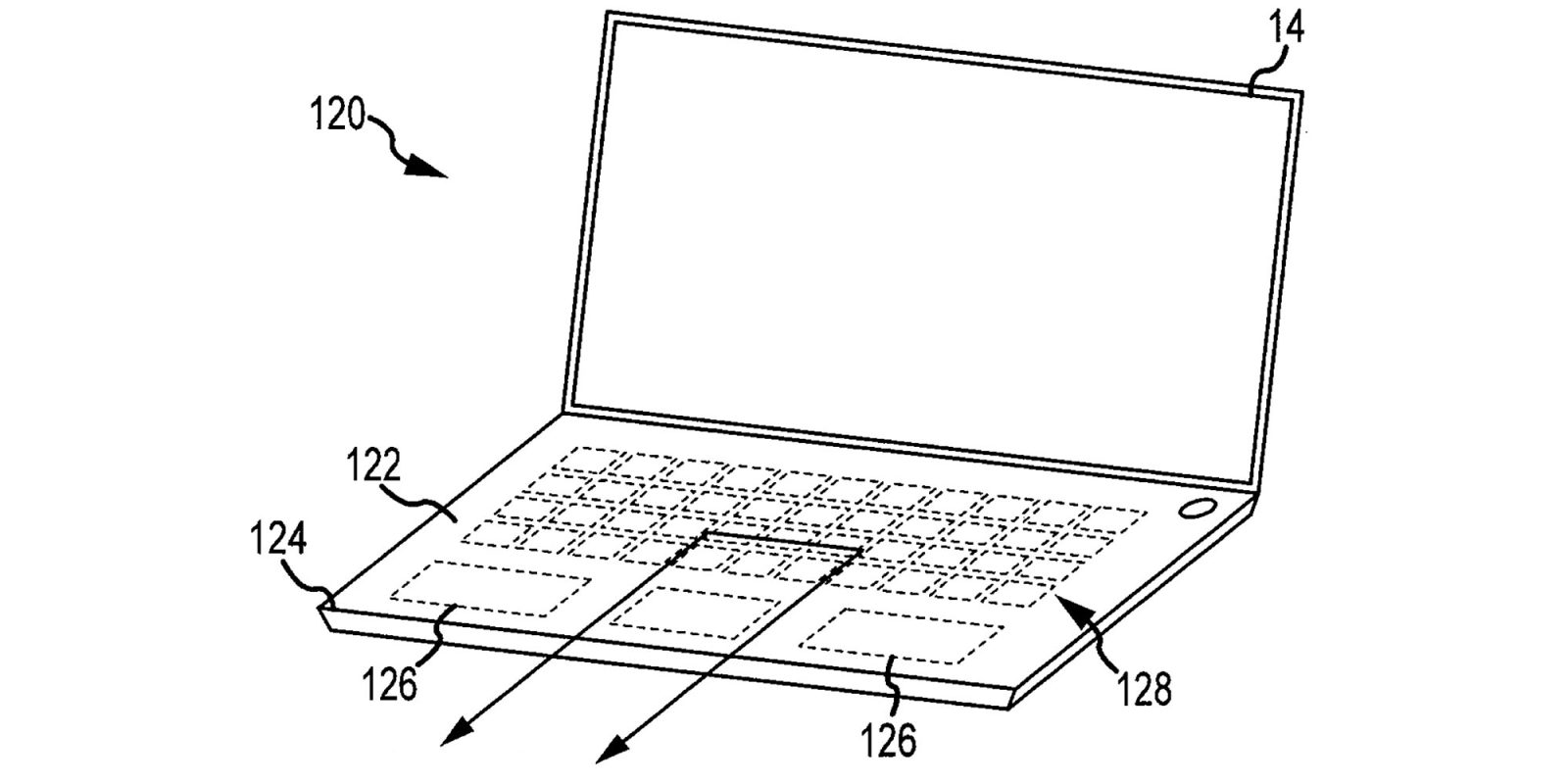
Apple famously dispensed with a physical keyboard when it revolutionized the smartphone market, and the company’s long-term goal appears to be to do the same for laptops.
A succession of patents have revealed Apple’s work on an all-screen MacBook with a virtual trackpad and keyboard, and a new continuation patent published yesterday shows that this project is still very much alive …
Soft versus hard buttons and keys
When launching the iPhone back in 2007, Steve Jobs said that the big advantage of an on-screen keyboard is that the buttons can change depending on what is needed for any given app, and Apple could add or remove buttons to an existing device with a software update.
The iPhone was launched with a soft keyboard, and the iPad likewise.
There have of course been changes since then. Apple created a Magic Keyboard for the iPad, recognizing that while soft keyboards are fine for limited use, extensive typing needs a physical keyboard for both comfort and productivity.
The company gave up on its one move toward a soft keyboard on the MacBook, in the form of the Touch Bar.
Apple has even been adding more physical buttons to the iPhone, first in the form of the Action Button and now with the Camera Control one.
Haptics as a substitute for moving keys
For many, a hard keyboard is a hard requirement for a MacBook, but Apple continues to believe that it’s possible to mimic the sensation of a physical keyboard using clever haptics.
We’ve of course seen moves towards this too. The trackpad on the latest MacBooks don’t actually click – the sensation is generated entirely by haptic motors – but does feel incredibly convincing.
The challenge with keyboards is much greater, however. Our fingers need to feel the keys even before we press them, and keys soften the impact too, making for far more comfortable typing than is possible on a glass keyboard.
Apple patents for all-glass MacBooks
The company’s attempts to replicate the comfort and sensation of a physical keyboard in an all-glass MacBook date back many years. In 2018, for example, we saw a three-fold approach.
First, allowing a flexible screen to deform when a virtual key is pressed, for comfort. “When pressed, the user’s finger may form a depression in the keyboard surface beneath the finger. The pixelated capacitive sense layer may detect the depth and/or location of the depression to determine both an amount and a location of a force.”
Second, haptic feedback would be used to simulate the click of a real key. “The haptic actuators may induce a physical sensation that is similar to or representative of a mechanical key.”
Third, an electrostatic charge could also be used to simulate the feeling of the edge of a key, making it feel like a real keyboard when you place your fingers on it ready to type. “The electrostatic charge may cause an actual or perceived change in friction or surface roughness between an object (e.g., the user’s finger) and the input surface by electrostatically attracting the user’s finger to the surface.”
There have been a series of Apple patents with further work in this area, and today’s continuation patent (spotted by Patently Apple) builds on this work.
Today’s document doesn’t reveal anything new, but it does suggest this is very much a live project for the company, even if it actually achieving the end goal may still be many years away.
Could you ever imagine Apple succeeding in creating a MacBook with a virtual keyboard that looks and feels like a real one, even being suitable for touch-typing? Please share your thoughts in the comments.
Drawing: Apple
FTC: We use income earning auto affiliate links. More.






Comments